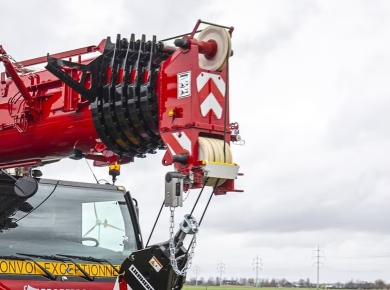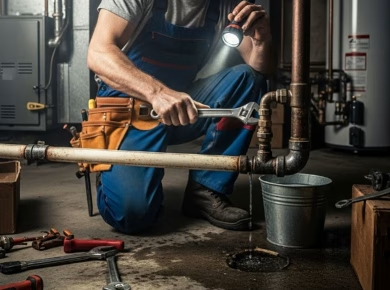When it comes to safety briefings, it’s astonishing how often the message gets lost in translation. I’ve seen it countless times—teams gathered around, nodding along as the safety officer rattles off protocols and guidelines, only for the essential points to fade away as soon as the briefing ends. The reality is that safety briefings can be a routine chore, but they don’t have to be. With a little creativity and a focus on engagement, you can turn these critical moments into memorable experiences that resonate long after the meeting is over.
Understanding Your Audience
Before you even think about what to say in your safety briefing, take a moment to consider who you’re speaking to. Each crew member brings a unique set of experiences, backgrounds, and levels of understanding about safety protocols. Tailoring your message to these varied perspectives can significantly enhance retention.
Identify Learning Styles
Some people learn best through visuals, while others may prefer hands-on demonstrations or verbal instructions. Engage with your team beforehand to understand their preferences. For instance, if you’re briefing a crew that primarily consists of younger workers who are accustomed to digital media, incorporating videos or interactive apps might capture their attention more effectively than a traditional PowerPoint presentation.
Gauge Experience Levels
Another key factor is the experience level of your crew. A group of seasoned workers may respond better to discussions that challenge their existing knowledge or invite them to share their insights. Conversely, new hires might need more foundational information, so be prepared to adjust your content accordingly.
Crafting Memorable Messages
Once you have a grasp on your audience, it’s time to craft your message. The goal is to create a lasting impression that reinforces safety protocols without overwhelming your crew with jargon or excessive detail.
Use Storytelling
Storytelling is a powerful tool for making your briefings more engaging and relatable. Share real-life examples of safety incidents and the lessons learned from them. I remember a project where a simple miscommunication led to a near-miss accident. By recounting that story to my team, not only did it highlight the importance of clear communication, but it also made the message personal and relatable. When people can see themselves in a scenario, they are more likely to remember the lessons.
Incorporate Humor and Lightness
While safety is a serious matter, that doesn’t mean your briefing needs to be devoid of humor. A light-hearted approach can ease tension and make the information feel less daunting. Use appropriate jokes or anecdotes to keep the mood relaxed while still driving home the critical points of safety. Just be careful not to make light of actual safety concerns, as that can backfire.
Engagement Techniques
Engagement is key to ensuring your crew retains the information shared in safety briefings. If they feel involved, they’re more likely to remember what they learned.
Interactive Elements
Consider including interactive elements such as quizzes or scenario role-playing. For instance, after discussing a protocol, you might present a hypothetical situation and ask the crew how they would respond. This not only reinforces the safety guidelines but also encourages team members to think critically about applying what they’ve learned.
Utilize Visual Aids
Visuals can significantly enhance comprehension and retention. Use charts, infographics, or even props that relate to the safety topic at hand. For example, demonstrating proper lifting techniques with a weight or showing the correct use of personal protective equipment can make a stark difference in how effectively the information is absorbed.
Follow-Up and Reinforcement
The end of a safety briefing should never be the end of the conversation. Reinforcement is crucial for long-term retention of safety practices.
Regular Check-Ins
Schedule regular check-ins with your team to discuss safety topics. This doesn’t have to be formal; casual conversations during coffee breaks can be a great way to keep safety top-of-mind. Use these opportunities to revisit key points from previous briefings and reinforce the importance of those messages.
Feedback Loops
Encourage feedback from your crew regarding the safety briefings. What worked? What didn’t? This not only shows your team that their opinions matter but also provides you with valuable insights into how you can improve future briefings. Create an open environment where team members feel comfortable sharing their thoughts.
Creating a Safety Culture
Ultimately, the goal of making safety briefings memorable is to foster a culture of safety within your organization. A culture where safety isn’t just a checklist, but a shared commitment among all team members.
Lead by Example
As a leader, your approach to safety sets the tone for the entire crew. Demonstrating a genuine commitment to safety in your daily practices encourages your team to take it seriously as well. Share your own experiences and the importance of adhering to safety protocols, not just during briefings but throughout the workday.
Celebrate Safety Wins
Recognizing and celebrating safety achievements can reinforce the importance of safety culture. Whether it’s acknowledging a team member for following safety protocols or celebrating a milestone of zero incidents, these moments serve as powerful reminders that safety is everyone’s responsibility.
In a field where the stakes are high, memorable safety briefings can be the difference between a minor incident and something far more serious. By understanding your audience, crafting engaging content, employing interactive techniques, and reinforcing the message, you can create a lasting impact that keeps safety at the forefront. When every crew member understands the importance of safety and feels personally invested in it, you’re not just following regulations—you’re building a safer workplace for everyone involved.


